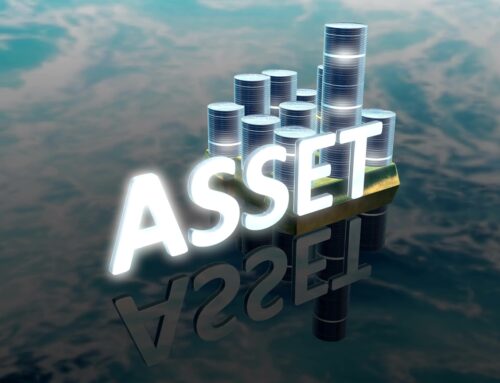Wading Into New York’s 2025 NYS Wetlands Permitting Changes
October 30, 2025
Over the last year, the New York State (“NYS”) wetlands permitting and statutory regime has been flooded with activity as the impacts of the 2022 statutory amendments ripple outward. The 2022 changes were amendments to New York State Environmental Conservation Law Article 24, the Freshwater Wetlands Act, expanding the New York State Department of Environmental Conservation’s (“NYSDEC’s”) authority to regulate wetlands.
On January 1, 2025, NYSDEC’s new wetlands regulations came into effect at 6 NYCRR Part 664. In April, four lawsuits were filed challenging the 2022 changes and the regulations.
In mid-July, NYSDEC issued the Solar Photovoltaic Projects General Permit GP-0-25-004 (the “General Permit”) which incorporates the new regulations and facilitates the construction of solar projects with a nameplate generating capacity of no more than 25 MW within or near state-regulated freshwater wetlands, regulated adjacent areas (“adjacent areas”), and protected waterbodies.
In late September, NYS Republican legislators filed four amicus curiae briefs in the lawsuits challenging the statutory and regulatory changes.
Taken together, these events reflect a potentially tidal shift in NYS wetlands rules, though the exact direction of the current remains unclear, pending the litigation.
April: Four Lawsuits Filed
The four cases were brought by local governments, trade groups, nonprofits, and individuals. One was filed on April 18 in Chautauqua County; the others were filed April 30 in Albany County. They are Chautauqua Lake Property Owners Ass’n v. State of New York; Business Council of NYS v. NYSDEC; Chautauqua Lake Partnership, Inc. v. NYSDEC; and Village of Kiryas Joel v. NYSDEC.
The April 30 cases target the 2025 regulations; the April 18 case challenges both the regulations and the 2022 amendments.
Generally, the petitioners argue that landowners face increased uncertainty, new regulatory burdens, and a restriction of property rights. They argue that residential uses would be subject to a complex regulatory process and that commercial and industrial projects will slow, harming municipal tax bases.
More specifically in Village v. NYSDEC and Business Council v. NYSDEC, petitioners claim that the rules impede the Governor’s affordable housing mandate by reducing developable land. In CLP v. NYSDEC and Property Owners v. NYS, petitioners state that the new regulations grant NYSDEC authority over water bodies and adjacent lands that do not match the traditional concept of a wetland. They argue that (1) there would be duplication of required permits, creating new burdens for landowners; (2) lakefront properties would be regulated for improvements like driveway modifications, decreasing property values; (3) recreational and tourist activities would be limited, harming local economies; and (4) routine activities like invasive species control would be restricted, impacting lake health.
July: Solar Photovoltaic Projects General Permit Issued
The General Permit allows certain construction activities for solar projects with a nameplate generating capacity of no more than 25 megawatts (MW) under a defined set of conditions, in lieu of project-specific, individual Article 15 and/or 24 permits. The General Permit underwent revisions by NYSDEC in response to public comments. According to NYSDEC, the final General Permit balances the State’s renewable energy goals with its obligation to ensure environmental resource protection.
What the General Permit Covers
The General Permit became effective July 15, 2025 and expires July 14, 2030. It authorizes five specific activities related to the construction and operation of solar projects 25 MW or less:
- Authorized Activity #1: Construction of temporary and permanent access roads and associated vegetation clearing, subject to certain conditions. For example, construction of access roads in adjacent areas must be minimized to the maximum extent practicable.
- Authorized Activity #2: Construction of power interconnections and collection lines, subject to requirements to minimize impacts to freshwater wetlands to the maximum extent practicable by locating all lines within or immediately adjacent to permanent access roads.
- Authorized Activity #3: Construction of solar infrastructure on existing paved areas, parking lots, and other structures in adjacent areas.
- Authorized Activity #4: Vegetation clearing, ground disturbance, and installation activities in freshwater wetlands that are under active agricultural use and in adjacent areas necessary for solar facility construction.
- Authorized Activity #5: Freshwater wetland mitigation activities to offset any unavoidable impacts associated with Authorized Activity #1 (construction of temporary and permanent access roads).
The General Permit also requires wetland mitigation, vegetation enhancement, decommissioning and site restoration, stormwater management, and species protection.
What the Solar General Permit Does Not Cover
The General Permit does not apply to solar projects on certain lands, such as those within Indian Nations, under the jurisdiction of the Adirondack Park Agency, and Coastal Erosion Hazard Areas. The General Permit is also inapplicable to solar projects located within vernal pools or their adjacent areas, nutrient poor wetlands or their adjacent areas, and sites undergoing remediation under an Environmental Remediation Program pursuant to 6 NYCRR § 375. Additionally, it excludes activities that would have adverse historic, archeological, or cultural impacts; activities requiring an Individual Permit from the U.S. Army Corps of Engineers pursuant to Section 404 of the Clean Water Act; and activities that require an incidental take permit pursuant to 6 NYCRR § 182.
While the General Permit aims to maintain protections for wetlands and waterbodies, NYSDEC can still require individual permits for projects that do not qualify for the General Permit or if site-specific concerns arise.
September: Four Amicus Briefs Filed
The four amicus briefs were filed in the above-referenced lawsuits by nine Republican members of the NYS Assembly and one Republican NYS Senator. They are largely identical.
The briefs argue that NYSDEC’s regulatory interpretation of the 2022 statutory amendments unlawfully extends wetlands jurisdiction beyond the statute. Petitioners urge the court to annul the new wetlands regulations at 6 NYCRR Part 664. They focus in particular on how the regulations expand into waters not traditionally considered wetlands based on “unusual importance” factors that amici argue only apply to wetlands below 12.4 acres.
Looking Ahead: Implications of the General Permit and the Litigation
The General Permit allows developers of qualifying projects, as discussed above, to follow the permit’s standards and conditions rather than obtaining an individual permit. The General Permit is meant to reduce case-by-case review and enable more predictable project timelines, but NYSDEC must ultimately agree on the extent of their jurisdiction over the proposed activity and impacted waterbody.
During the public comment period, developers and industry groups expressed concern that the new regulations could stall NYS solar development. NYSDEC revised the draft General Permit to incorporate feedback. Notably, the General Permit incorporates some of the substantive standards proposed by the industry, but does not, for example, adopt wetland mitigation standards required by the Office of Renewable Energy Siting (“ORES”), as some commenters had suggested.
For 20 to 25 MW projects that opt-in to the Article VIII permitting process, it is uncertain whether applicants can take advantage of the General Permit as a means of complying with ECL Article 15 and 24. NYSDEC proposed that the draft General Permit would not apply to solar projects regulated under Public Service Law Article VIII nor the prior Executive Law 94-C; however, such express exclusionary language does not appear in the final General Permit. As an Article VIII Siting Permit incorporates permit standards and conditions to comply with ECL Articles 15 and 24, Article VIII opt-in applicants will likely need to continue complying with ORES’s wetland mitigation requirements unless and until ORES adopts regulations that align their wetland standards for opt-in projects with those of the General Permit. Thus, the time-saving benefits of the General Permit may primarily benefit solar projects 25 MW and less that are permitted locally and require NYSDEC permits, rather than those projects that opt-into ORES’s streamlined permitting process.
The General Permit could be impacted by the litigation. Generally, if the court accepts the petitioners’ arguments in the litigation, NYSDEC’s Article 24 reach would narrow. The extent of that narrowing could vary greatly.
If the courts accept the petitioners’ arguments to their fullest extent in Property Owners v. NYS and set aside the statutory amendments and regulations, there could be dramatic changes to the wetlands legal regime, as the modifications made over the last three years would no longer be in effect.
Any rulings curtailing NYSDEC’s authority in a more limited fashion, whether that would be a full or partial rollback of the 2025 regulations, could reduce the number of sites needing Article 24 authorization, and thus the practical relevance of the General Permit could shrink.
Rulings upholding NYSDEC’s approach would make the General Permit an increasingly useful streamlined permitting scheme for qualifying solar projects.
Whether the statutory amendments, new regulations, and the General Permit continue as they are turns on the pending cases. In the meantime, community and distributed solar developers should consider the General Permit standards early on in their design process to determine whether avoidance or minimization allows coverage under the General Permit.
Search
RECENT PRESS RELEASES
Related Post


